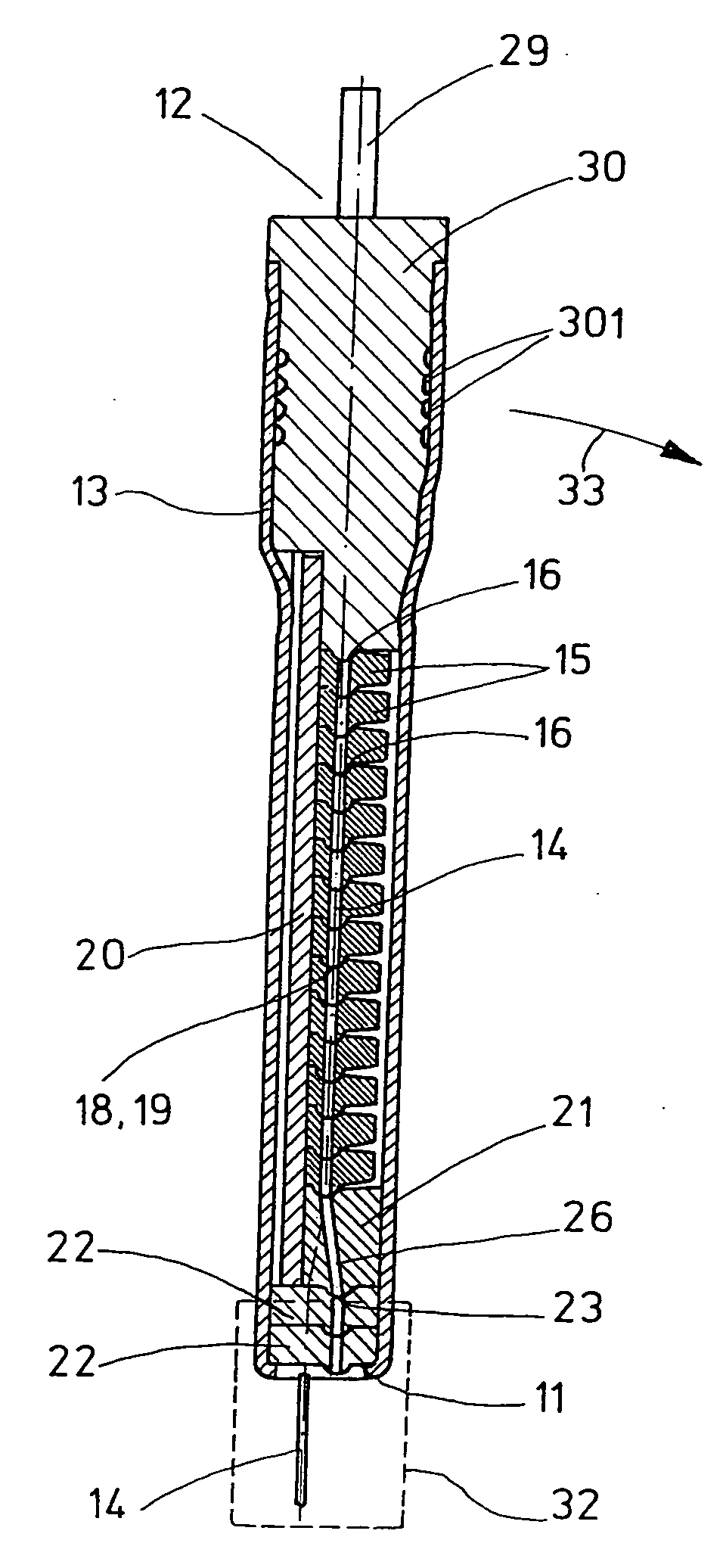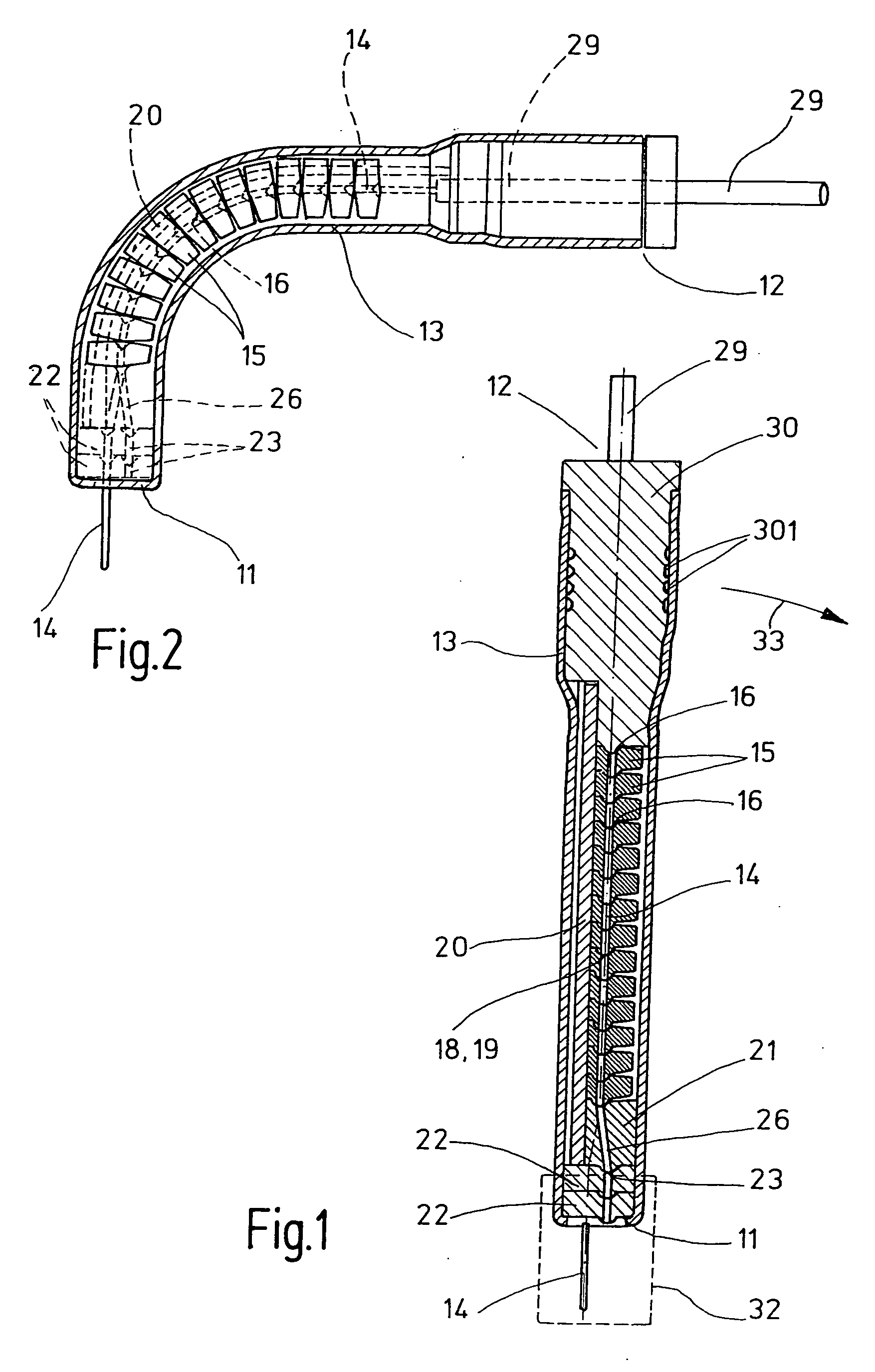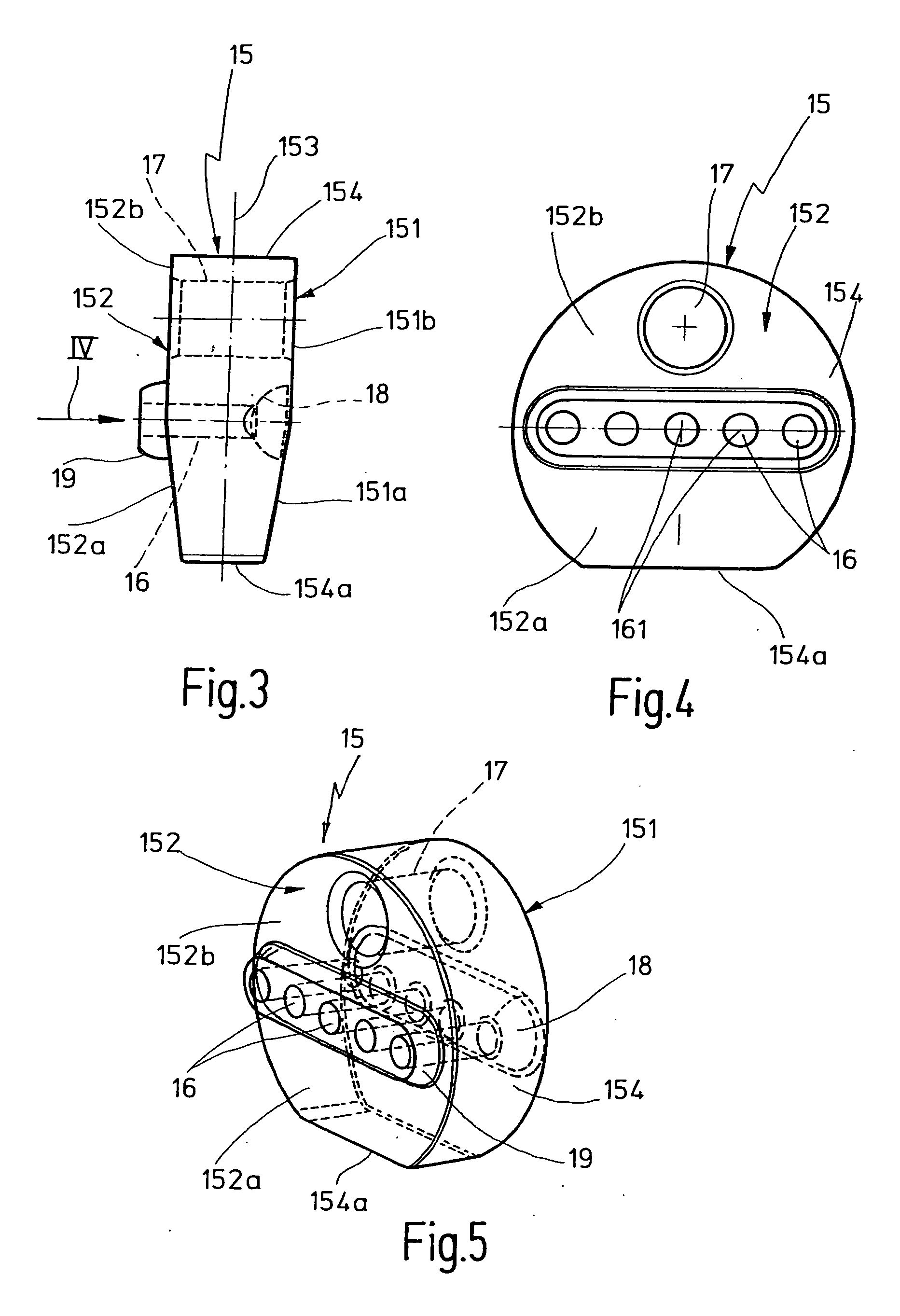Connecting lead for a sensor
a technology for connecting leads and sensors, applied in the direction of rigid-tube cables, instruments, material analysis, etc., can solve the problem that the connection lead of this type cannot be bent upon installation, and achieve the effect of simple and inexpensive fashion, high manufacturing efficiency and simple structur
- Summary
- Abstract
- Description
- Claims
- Application Information
AI Technical Summary
Benefits of technology
Problems solved by technology
Method used
Image
Examples
Embodiment Construction
[0022] The connecting lead depicted in FIGS. 1 and 2 for a sensor, in particular for a sensor for determining a physical property of a measured gas, such as the temperature or oxygen concentration in the exhaust gas of internal combustion engines of motor vehicles, serves to join the sensor element (not depicted here), exposed to the measured exhaust gas, to a connector plug (not depicted here) for connecting the sensor to a control unit in the electrical system of the motor vehicle. Connecting lead 11 has a sheathing tube 13 made of high-temperature-resistant metal and, in the exemplary embodiment, a total of five electrical conductors 14 that extend in the interior of sheathing tube 13 between a sensor end 11 and a connector end 12 of sheathing tube 13. Electrical conductors 14 are embodied as bare, high-temperature-resistant wires. In order to avoid short circuits on the one hand between electrical conductors 14 and on the other hand between electrical conductors 14 and sheathing...
PUM
| Property | Measurement | Unit |
|---|---|---|
| electrical conductors | aaaaa | aaaaa |
| physical property | aaaaa | aaaaa |
| temperature | aaaaa | aaaaa |
Abstract
Description
Claims
Application Information
 Login to View More
Login to View More - R&D
- Intellectual Property
- Life Sciences
- Materials
- Tech Scout
- Unparalleled Data Quality
- Higher Quality Content
- 60% Fewer Hallucinations
Browse by: Latest US Patents, China's latest patents, Technical Efficacy Thesaurus, Application Domain, Technology Topic, Popular Technical Reports.
© 2025 PatSnap. All rights reserved.Legal|Privacy policy|Modern Slavery Act Transparency Statement|Sitemap|About US| Contact US: help@patsnap.com



